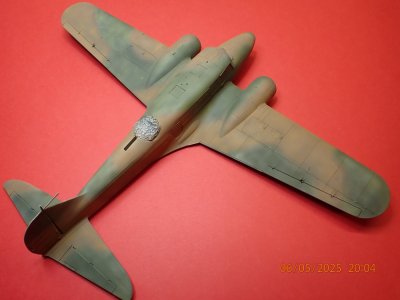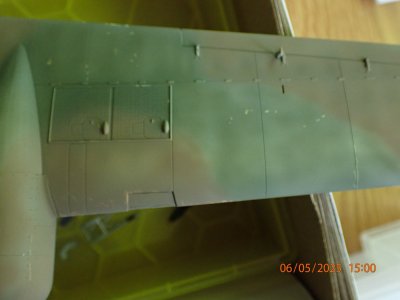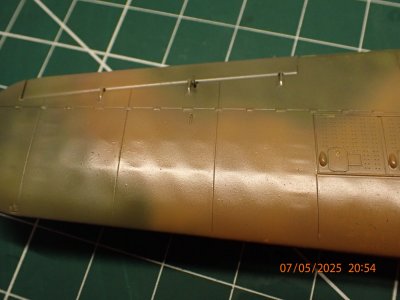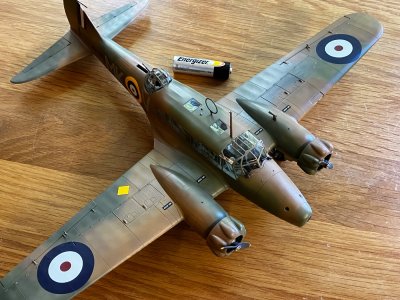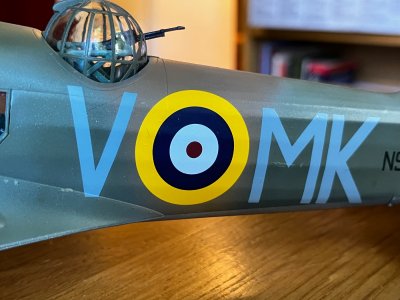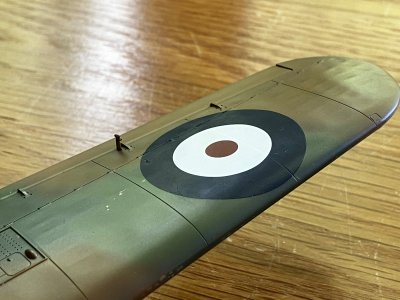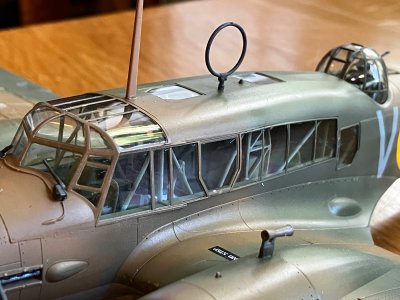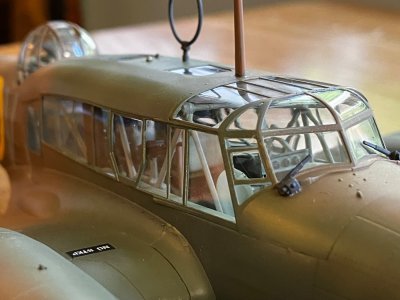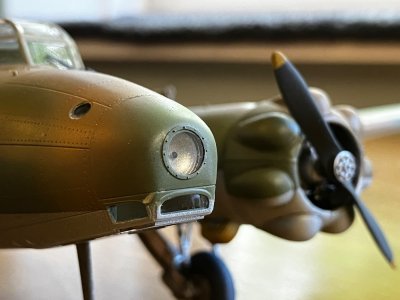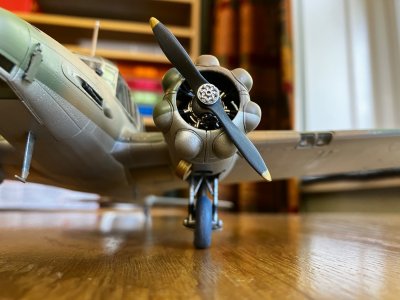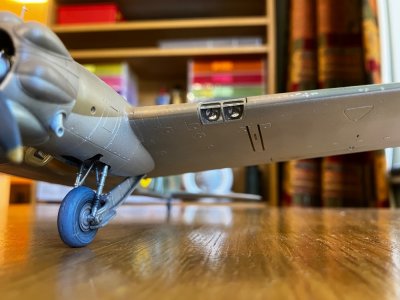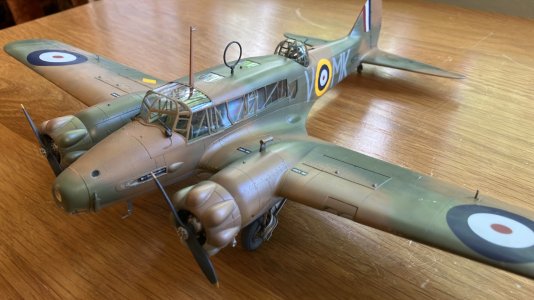- Joined
- Dec 3, 2022
- Messages
- 1,547
- Points
- 488

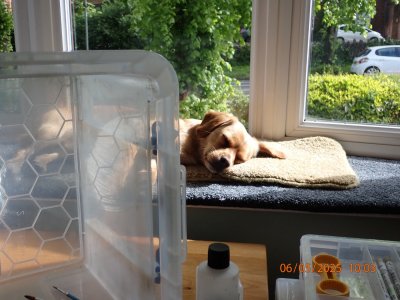
Flushed with excitement after this morning's viewing, I determined to get on with the painting ASAP (as soon as permitted). It won't take long, the morning sun soon moves out of that window.

While waiting I refreshed my fading memory with a look at a book called RAF Aircraft of WWII in Colour. I found an Anson and an explanation, probably apocryphal, for the choice of yellow to designate trainer aircraft. It ain't the brightness, red is as bright and modern RAF trainers are black for max visibility. No, apparently it was based on the international flag signals. Yellow = Quarantine = Keep away! RAF aircrew trainees were as welcome to operational pilots as the plague!
Isn't that Anson shiny? Typical training command.

But I digress. This Wellington is a good example of tired paint in the period. It's blotchy, streaked and there are several different colours of green and of brown. I've never been able to reproduce this in 50 years of modelling aircraft. Maybe this time I'll get a bit closer.
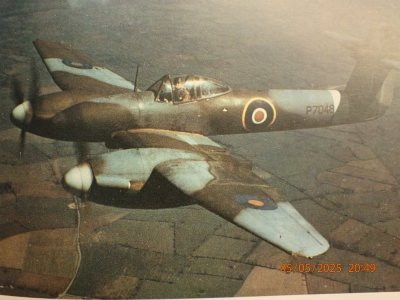
I wanted to draw your attention to that demarcation line on the port wing. No masks were used there; that is freehand with a spraygun and then fill in the area behind almost up to the line.
Although many models are masked to give the hard edge specified in Air Ministry Instructions, the real things were not neccessarily as sharp. Even when the aircraft were painted in the factory, the masks were thick rubber mats. If the painters were daft enough to spray right up to the point where rubber met metal, paint would flow underneath and make a mess. No, they sprayed obliquely, leaving a feathered edge of varying width.
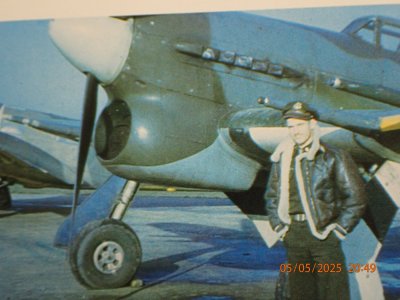
Except when they didn't.
See the line on this Typhoon's chin radiator. The line between upper and lower surface colours seems to have been masked with tape in this case. I think because part of it is overhanging and a rubber mat type mask would be difficult to hold in place.
Essentially, the paintwork was variable in application, colour, durability, sheen, cleanliness and everything else you can think of. The only 'weathering technique' missing from these photographs seems to be those ridiculous black panel lines that are so fashionable in the model aircraft world these days - where modellers refer to each other's models instead of historical photographs. Idiotic!
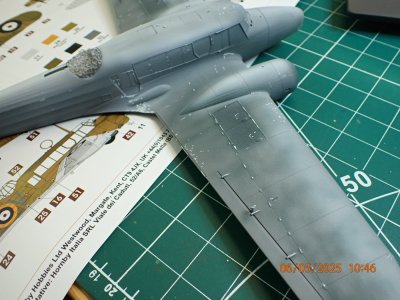
The windowsill was still sunny so I played with some more highlights and modulations until His Majesty moved into the other room, following the light.
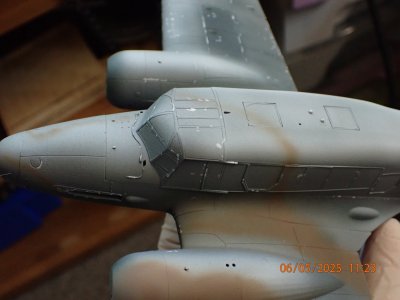
I sketched in the outlines following the Airfix plans. They are contradictory in places where the plan varies from the profiles, but I see them only as a guide to the general style anyway.
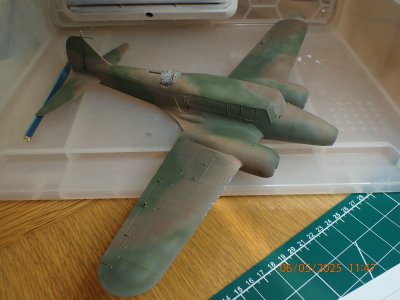
Then I filled in the rest with a thin, thin, thin, layer of paint. There is more to come but now it's time for walkies. Buddy likes to patrol the streets of town and hunt down any scraps of flakey pastry, the odd biscuit, the very occasional sausage which has rolled off someone's tray and those wonderful pavement pizzas left from last night's revels. And to think he licks me with that tongue.
Last edited:



 "If you don't mess up from time to time, you aren't trying hard enough." (Me)
"If you don't mess up from time to time, you aren't trying hard enough." (Me)
